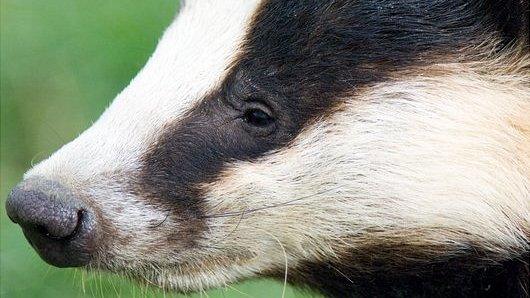Has Defra shown that badger culling stems cattle TB?
- Published
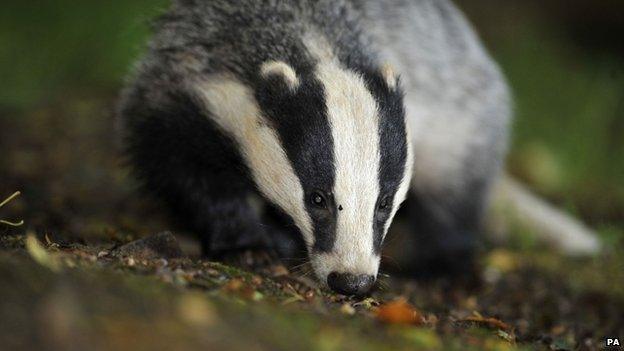
Former Environment Secretary Owen Paterson famously accused the "badgers of moving the goalposts" when defending changes to his culling strategy
The government says that it is ready to extend its badger cull policy to Dorset, following pilots in Gloucestershire and Somerset. But will it work?
Last year an independent scientific assessment concluded culls carried out in 2013 were neither humane or effective in killing enough badgers to control the spread of TB in cattle.
As a result the then Environment Secretary Owen Paterson announced the policy would not be extended to other areas as many farmers had hoped - though the ongoing culls would continue as planned and everyone concerned would try harder the following year to make them work.
So all eyes were on the a new assessment of the culls in 2014, external carried out by Defra. It found that targets for killing badgers had been met in Somerset, but not in Gloucestershire.
Defra argued that these results provided enough evidence to start rolling out more trials - a move that was welcomed by the National Farmers' Union President Meurig Raymond.
"The NFU believes the strategy - the first comprehensive plan to tackle bovine TB in England - gives us the best chance of controlling and eradicating this devastating disease and it is vital it is implemented in full as quickly as possible," he said.
But Prof Rosie Woodroffe, an ecologist whose research underpins the current culls, accuses Defra of playing fast and loose with its use of scientific evidence.
"The government has a record of cherry-picking scientific evidence on this issue," she said.
"But this announcement plumbs new depths. In doing so, it does a disservice to the farmers it seeks to protect, by feeding their hope of a solution to the TB problem with an approach which actually risks making the problem worse."
Scientific evidence
So who is right?
In order to try and answer that question it's worth looking back at the science on which the current badger culls are based.
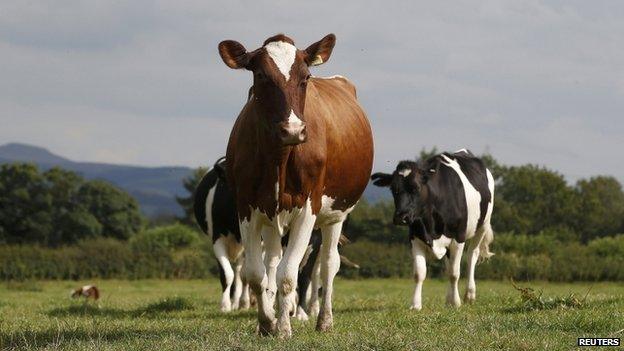
The aim is to reduce TB infection in cattle
An eight-year trial beginning in 1998 by Prof Woodroffe and her colleagues showed that a sustained and co-ordinated culling of badgers can slow down the rate of increase in cattle becoming infected with TB in the immediate area. It also showed there was an increase in TB infections outside the cull area.
The so-called Krebs trial showed that one could expect a a reduction of 12-16% of infected herds in a nine-year period for a 150 sq km area (60 sq miles) if more than 70% of badgers are killed in a series of culls held once a year for four years.
If fewer than 70% of badgers are killed, it is less likely that cases of cattle TB will be reduced and may even increase because of the greater movement of badgers caused by the culling.
Badgers move into an area because of the greater availability of food and habitats following culling.
Increased infection
This is why there has been so much concern about the proportion of badgers culled each year. Kill too few and you actually risk increasing the spread of TB. Of course, this makes it essential to obtain an accurate number of how many badgers there are in the area in the first place.
In the first of Defra's pilots, scientists carried out a detailed analysis of the number of badgers in each area. For the next round of culls Defra has set out a new approach in a document published on Friday., external

Badger cull targets
Dorset - Minimum 615, maximum 835
Gloucestershire - Minimum 265, maximum 679. In 2014 - Minimum 615, Maximum 1,091 (actual culled 274)
Somerset - Minimum 55, maximum 524. In 2014 - Minimum 316, Maximum 785 (actual culled 341)
Source: Natural England

The new approach is cheaper and involves estimating the number of badgers in the area on the basis of a national survey of the number of setts per square kilometre and multiplying it by the average number of badgers per sett.
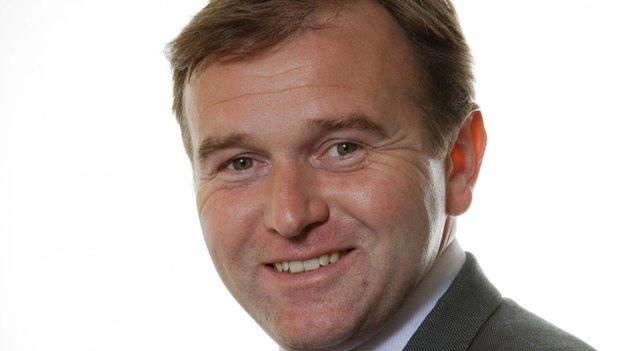
Farming Minister George Eustice announced the new measures
For such calculations scientists come up with an upper estimate - 1,547 in the case of Dorset and a lower estimate of 879.
Defra has set its target as killing 70% of the lower estimate on the basis of what it describes as a "precautionary approach" - so that it does not kill too many badgers. It concludes therefore that the minimum number of badgers to be removed in Dorset in 2015 is 615.
The department has also adopted the same approach in setting targets in the other cull areas.
According to Prof Woodroffe, if Defra's aim is to eradicate disease, rather than protect badgers, then a precautionary approach should entail killing slightly too many badgers rather than too few.
"Rather than basing these targets on the most likely number of badgers or even the higher estimate in order to be confident of killing "at least" 70% of badgers, all three targets announced are based on the lowest plausible estimate," she said.
"Setting the targets in this way gives a small possibility of reducing badger numbers by 70%, but a much smaller reduction is much more likely."
The department is also starting a consultation process, external on whether the cull period could be altered for future culls - possibly to allow them to be extended beyond six weeks. This would give marksmen more time to meet their targets.
A short culling period was set following evidence from the Krebs trial that unless the badgers were killed in a short sharp shock the extended movement over a longer period of time would increase the spread of TB infection.
On announcing measures to tackle bovine TB, the Farming Minister George Eustice said: "England has the highest incidence of TB in Europe and that is why we are taking strong action to deliver our 25-year strategy to eradicate the disease and protect the future of our dairy and beef industries."
Follow Pallab on Twitter, external
- Published28 August 2015

- Published28 September 2012
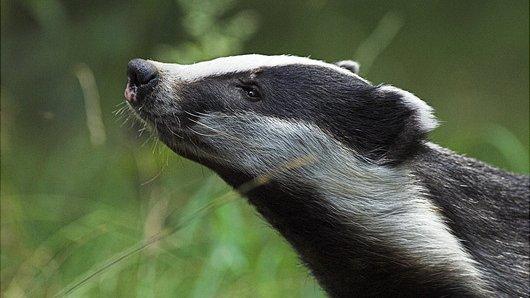
- Published17 September 2012
